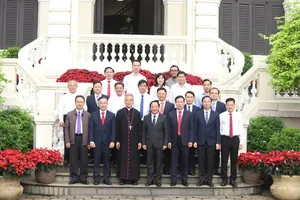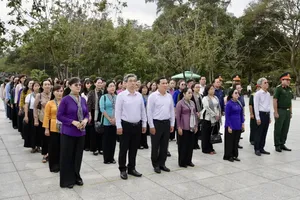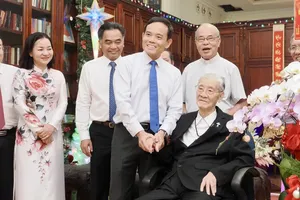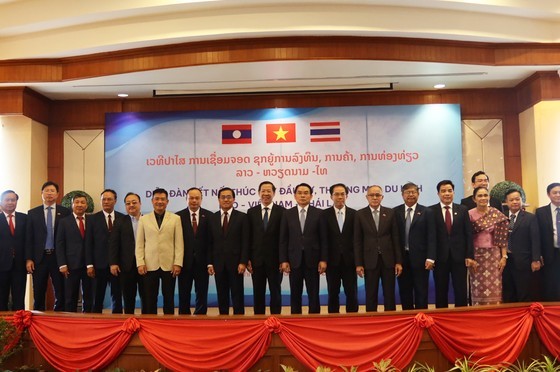 |
Leaders from various authorities, businesses, and associations participated in the forum. (Photo: SGGP) |
Mr. Phan Van Mai, Member of the Party Central Committee, Permanent Deputy Secretary of the City Party Committee, and Chairman of the Ho Chi Minh City People's Committee, led the HCMC delegation to attend the forum to promote investment, trade, and tourism among Vietnam, Laos, and Thailand held in Pakse, Champasak Province, Laos, on the morning of April 10.
Leaders from various authorities, businesses, and associations participated in the forum, representing Champasak, Sekong, Salavan, and Attapeu in Laos; HCMC, Quang Tri, Da Nang, Quang Nam, Quang Ngai, Khanh Hoa, Kon Tum, Gia Lai, Binh Duong, Dong Nai, and Dong Thap in Vietnam; and Ubon Ratchathani in Thailand.
Promoting the development of the East-West Economic Corridor
In his opening speech at the forum, Mr. Nguyen Van Trung, Vietnamese Consul General to Pakse, explained that the event aimed to carry out economic diplomacy activities in 2023, implement agreements reached at the 45th session of the Vietnam-Laos Intergovernmental Cooperation Committee, and most importantly, promote cooperation in the development of the East-West Economic Corridor.
The Consulate General of Vietnam in Pakse collaborated with the Champasak Provincial Government and the Vietnam E-Commerce Association to organize the forum, with the primary objective of achieving positive results in the areas of investment, trade, and tourism. It is expected that the forum will strengthen the close relationships between Vietnam, Laos, and Thailand, particularly among their provinces and cities.
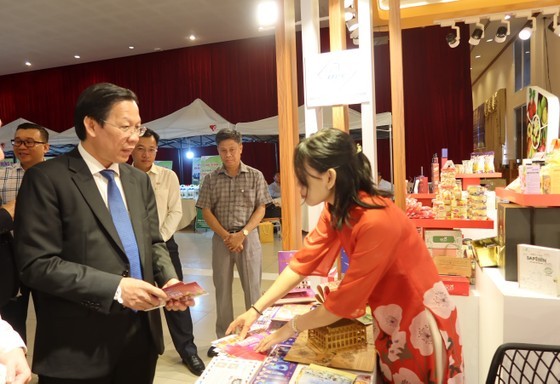 |
Mr. Phan Van Mai visits a booth of HCMC at the forum. (Photo: SGGP) |
Over the years, the leaders of the Vietnamese Party and State have consistently recognized the significant role played by the East-West Economic Corridor, as evidenced by the issuance of numerous resolutions and documents, including those incorporated into the National Master Plan for the period 2021-2030 with a vision towards 2050. They have also created favorable conditions, mechanisms, and policies to promote regional connectivity, enhance resource efficiency, and promote the rational, harmonious, and sustainable utilization of resources.
Vietnamese provinces and cities located along the East-West Economic Corridor have proactively invested in and developed infrastructure to fully leverage the corridor's potential and advantages. They have also encouraged cultural exchanges and facilitated investment, trade, and tourism activities between the localities along the corridor.
During the forum, various provinces and cities from Vietnam, Laos, and Thailand provided updates and information on their respective potentials, strengths, and preferential policies to attract investment. They also proposed cooperation contents between the parties and formulated plans to implement investment cooperation, all to promote the development of the East-West Economic Corridor.
In terms of infrastructure, various airports and seaports along the corridor route have been completed or are planned for investment in the near future, such as Da Nang International Airport, Phu Bai Airport (Thua Thien – Hue Province), Dong Hoi Airport (Quang Binh Province), Quang Tri Airport, and seaports including Chan May (Thua Thien – Hue Province), Tien Sa (Da Nang City), Ky Ha (Quang Nam Province), Vung Ang (Ha Tinh Province), Cua Viet, and My Thuy (Quang Tri Province).
Potentials and strengths of HCMC
Speaking at the forum, Mr. Phan Van Mai emphasized the significance of the event in terms of supporting trade promotion for Vietnamese enterprises, especially small and medium-sized ones. He also highlighted some of the potentials and strengths of HCMC, which he believes present great opportunities for the forum to explore new markets.
 |
Mr. Phan Van Mai speaks at the forum. (Photo: SGGP) |
Mr. Phan Van Mai stated that HCMC is not only situated in the heart of the Southern Key Economic Zone but also at the center of Southeast Asia, which is currently the world's fastest-growing region and home to over 600 million people. The city is well-positioned to connect with neighboring ASEAN countries, particularly Laos and Thailand, through its efficient transportation infrastructure and strategic location along key trade routes.
This offers ample opportunities for cooperation in logistics, transportation, and the preservation of goods, particularly in the agricultural sector, a key strength of the three nations. As a result, the city is an attractive destination for job seekers and offers convenient trade opportunities with neighboring countries.
According to Mr. Phan Van Mai, HCMC boasts the country's largest economic scale, with an approximate value of US$65 billion. Investors arriving in HCMC are presented with an immense number of potential customers, including the city's residents and the millions of tourists who visit each year (3.5 million international arrivals and 25 million domestic arrivals in 2021).
In addition, HCMC serves as a gateway to the dynamic Southeast economic region, which contributes significantly to Vietnam's overall economy, with a population of over 20 million people.
 |
The Vietnam E-commerce Association (VECOM) signs a collaboration agreement with three Southern Laotian provinces, Champasak, Sekong, and Salavan. (Photo: SGGP) |
Furthermore, during the forum, the Vietnam E-commerce Association (VECOM) signed a collaboration agreement with three Southern Laotian provinces, Champasak, Sekong, and Salavan, aimed at enhancing trade relations with other provinces in the Central, Central Highlands, and Southern regions of Vietnam by improving human resources and e-commerce solutions for business activities. The agreement also includes building a platform to facilitate cross-border online exchanges among Vietnam, Laos, and Thailand.
In his closing remarks, Mr. Vilayvong Butdakham, Member of the Central Committee of the Lao People's Revolutionary Party, Secretary of the Provincial Party Committee, and Governor of Champasak Province, emphasized that the forum's outcomes once again demonstrated the collective efforts of Laos, Vietnam, and Thailand in fostering cooperation and integration in investment, trade, and tourism.
He highlighted that this forum marked an important milestone in jointly building prosperous and sustainable socio-economic development for the three nations. Mr. Butdakham expressed his hope that this successful collaboration would continue to flourish in the future, fulfilling the aspirations of the people of the region.
The East-West Economic Corridor is an economic development program that includes four countries: Laos, Myanmar, Thailand, and Vietnam. It was first proposed at the 8th Greater Mekong Subregion (GMS) Ministerial Meeting in 1998 with three main objectives: to strengthen economic cooperation and promote trade, investment, and development among member countries; to reduce transportation costs and promote more efficient transportation of goods and people; and to reduce poverty and support the development of rural and border areas.

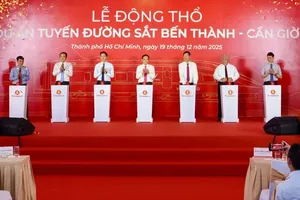



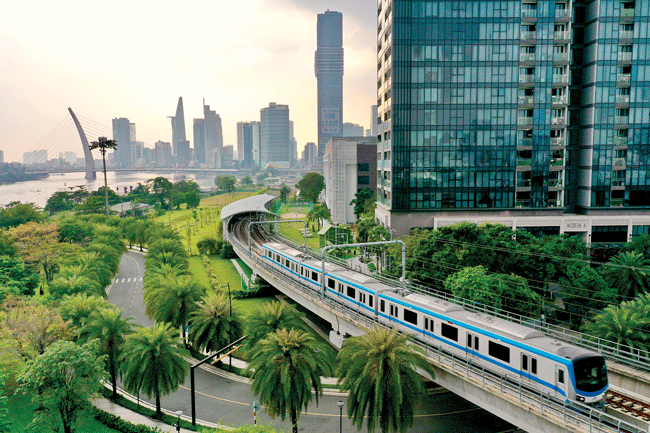
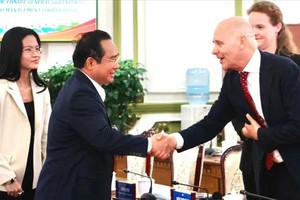


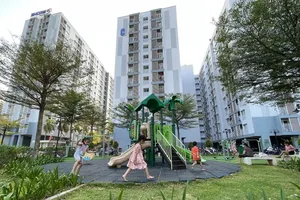
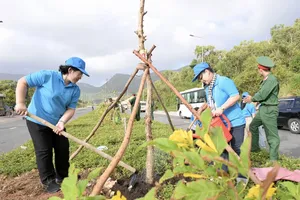
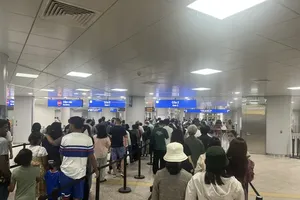
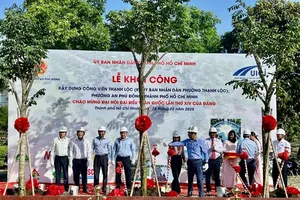
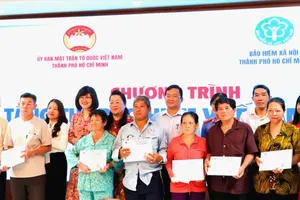
)

